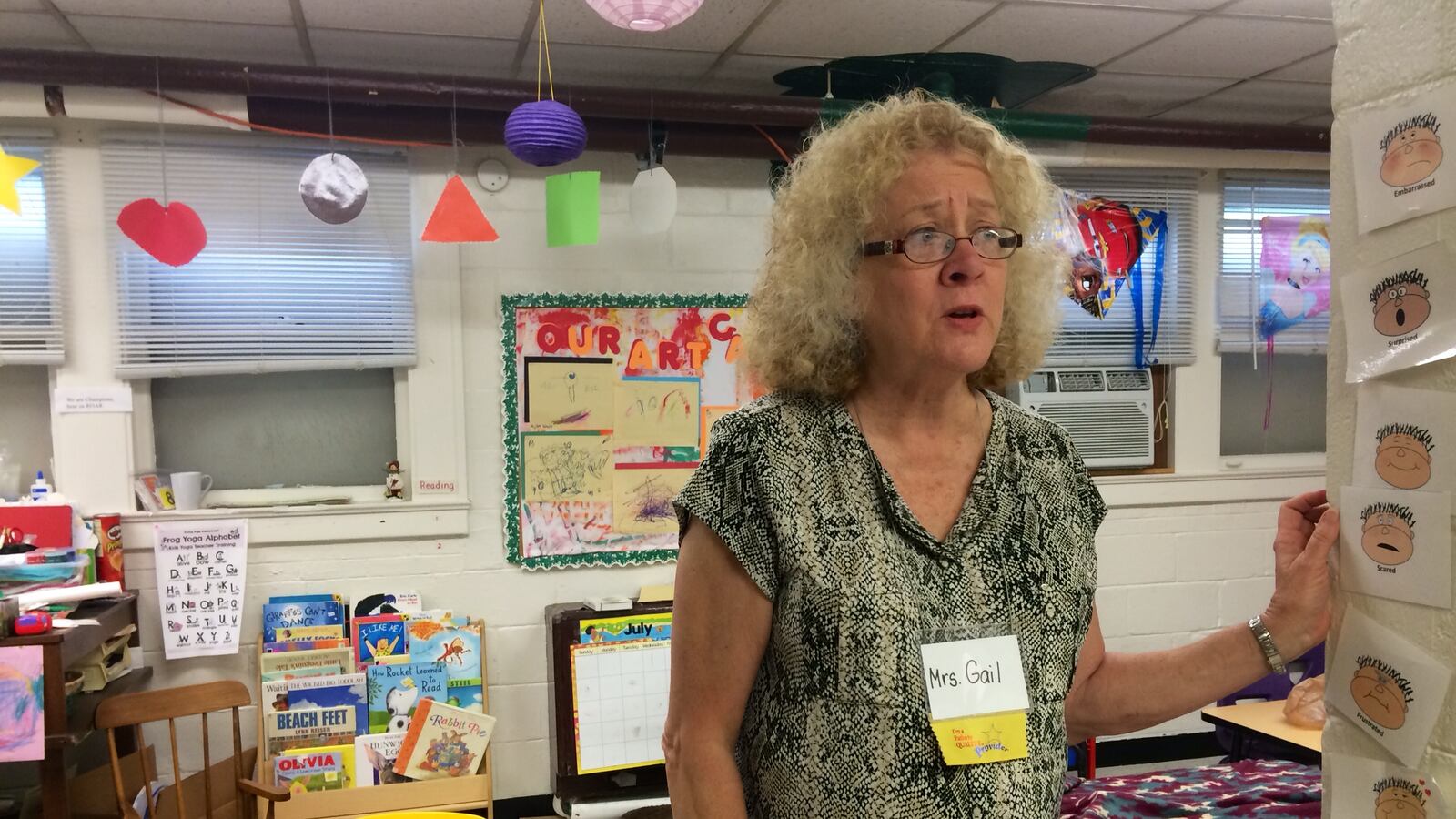Gail Wolfe started a preschool 10 years ago with three students, $350 to spend on furniture and a few empty rooms to use inside Lynhurst Baptist Church on Indianapolis’ West side.
The retired elementary school teacher’s goal was simple. She wanted to create a safe space in the neighborhood for young children to learn and play until it was time to go to kindergarten. Eventually, her idea caught on.
Today, about 45 children attend the preschool. The classrooms are brimming with blocks and books, and walls are adorned with brightly colored student artwork.
“They are doing things that look like play, but actually it’s a learning process,” Wolfe said. “Blocks help you figure out how to manipulate, planning and consequences. Dress-up helps reinforce fine motor skills.”
The preschool is once again expanding — this time to accommodate students from the state’s On My Way preschool pilot program. The program, which has been expanded to serve about 1,600 kids in five counties, was championed by Gov. Mike Pence and first signed into law in the 2014 legislative session.
Lynhurst Baptist Church is one of several smaller preschools in Indiana that are capitalizing on the momentum of two new public preschool programs — the state pilot and one sponsored by the city of Indianapolis — to improve and expand their facilities.
To date, 862 highly rated preschols in Marion County have expanded to add space for 862 new children to enroll since the start of the state pilot program, according to United Way.
The new spaces will help solve a problem created by the growth: Early education advocates have said they’re worried there’s not enough room in high-quality programs to accommodate the rising demand that will accompany programs injecting millions of new aid dollars to help families pay preschool tuition.
“To me, it was a no brainer,” Wolfe said about participating in the state preschool pilot. “We’re already here and we have the space. I have 10 to 12 children who have never been in a program, but yet they’re going to kindergarten next year. They’re going to be able to reason, think things out, predict. They’re hopefully going to be better prepared for what’s going to face them in kindergarten.”
Wolfe said she couldn’t afford to expand without the help of United Way, which has given her about $180,000 in grants over the past five years to help her preschool move up two levels on the state’s four-step Paths To Quality voluntary rating system. It’s now rated a 3, which certifies a preschool has adequate health and safety standards and an education program. To reach the top rating, preschools must earn a national accreditation.
Fewer than 15 percent of 800 preschool centers in Indianapolis are rated a 3 or 4.
On a Monday earlier this month, Wolfe stood in a room that is being converted into a new classroom, pointing out walls that were half painted and furniture in various stages of disarray. The new classroom was paid for in part by United Way grants and will help the preschool stretch to accommodate about 1o extra kids.
“We were kind of just a basic preschool trying to meet the needs of the community, and thanks to United Way, I feel like we’re really a gem,” Wolfe said. “I know we’re a great thing for the West side of Indianapolis.”
Providers have had a relatively short timeline to improve their capacity to take on more kids through the state and city scholarship programs, so United Way’s Director of Education Beth Stroh said the state and community groups like United Way stepped in to make sure there was enough space.
Since the state pilot launched early this year, United Way and the state Office of Early Childhood and Out of School Learning have made 16 grants totaling nearly $226,000. United Way has also spent $355,000 on 13 classroom expansion grants.
Sometimes, very small changes can help a preschool reach a 3 or 4 rating on Paths to Quality, Stroh said, which would qualify them to accept tuition vouchers from families using the state pilot program.
She said United Way focused giving grants to programs that could expand and meet the the two highest levels quickly if they got some extra resources, like money to buy high-quality learning materials or new furniture for a classroom.
That helps preschools take the risk of hiring new teachers by helping preschoola be sure they will have the space to add classes.
“We needed to make sure there were seats,” Stroh said. “We knew every one of those seats would be valuable.”

